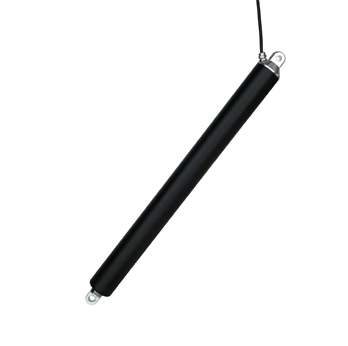In the demanding worlds of marine and outdoor automation, durability and reliability are paramount. For 12V linear actuators—devices tasked with converting electrical energy into precise mechanical motion—the difference between success and failure often hinges on one critical feature: IP68 waterproofing. Here’s why this standard is indispensable for applications exposed to water, dust, and extreme conditions.

1. Understanding IP68: The Gold Standard of Protection
The Ingress Protection (IP) rating system classifies a device’s resistance to environmental factors. The "6" in IP68 signifies complete dust resistance (dust-tight), while the "8" denotes protection against continuous submersion in water under specified conditions (typically 1+ meters depth for 30+ minutes).
IP68 vs. Lower Ratings:
IP67: Submersion up to 1 meter for 30 minutes (temporary exposure).
IP68: Designed for prolonged underwater operation (e.g., tidal zones, subsea equipment).
2. The Harsh Realities of Marine & Outdoor Environments
Marine and outdoor settings pose unique challenges:
Saltwater Corrosion: Salt accelerates metal degradation, destroying unprotected components.
Humidity and Condensation: Moisture ingress can short-circuit electronics.
Temperature Extremes: Thermal cycling weakens seals and materials.
Abrasive Elements: Sand, dirt, and UV radiation degrade non-resistant housings.
Without IP68 protection, actuators risk:
Electrical failures from water intrusion.
Mechanical jamming due to corroded internal parts.
Premature replacement costs and downtime.
3. How IP68 Actuators Are Engineered to Survive
Achieving IP68 compliance requires meticulous design:
A. Sealed Components
Hermetic Motor Encapsulation: Prevents water from reaching the motor windings.
Double-Lip Seals and Viton Gaskets: Resist saltwater and chemical exposure.
Stainless Steel Hardware: 316-grade screws and shafts combat corrosion.
B. Robust Housing Materials
C. Pressure Equalization
4. Real-World Applications Demanding IP68
Marine Systems
Boat Hatches and Trim Tabs: Submerged during rough seas.
Bilge Pump Actuation: Operates in flooded compartments.
Underwater Robotics: Deployed in ocean exploration or aquaculture.
Outdoor Automation
Retractable Awnings: Withstand driving rain and snow loads.
Solar Trackers: Endure desert sandstorms and monsoons.
Security Bollards: Function in flood-prone areas.
5. The Cost of Compromise: Risks of Lower IP Ratings
Using non-IP68 actuators in harsh environments leads to:
Frequent Failures: IP67 actuators fail under prolonged submersion.
Safety Hazards: Electrical shorts in marine systems risk fires or shocks.
Higher Lifetime Costs: Repairs and replacements outweigh upfront savings.
6. How Manufacturers Validate IP68 Compliance
Reputable manufacturers subject actuators to rigorous testing:
Dust Chambers: Confirm no particulate ingress.
Submersion Tanks: Test functionality after 24+ hours underwater.
Salt Spray Testing: Simulate years of marine exposure in weeks.
7. Choosing the Right IP68 12V Actuator
Key considerations for buyers:
Depth and Duration: Ensure the actuator meets your project’s submersion requirements.
Material Compatibility: Verify stainless steel or marine-grade aluminum construction.
Certifications: Look for DNV-GL, NMEA, or ISO 9001 compliance.
Conclusion: IP68 is an Investment in Longevity
For marine and outdoor applications, IP68 isn’t a luxury—it’s a necessity. By selecting IP68-rated 12V linear actuators, you ensure:
Uninterrupted Operation: Even in submerged or stormy conditions.
Reduced Maintenance: Sealed designs minimize wear from environmental stressors.
Long-Term ROI: Avoid costly replacements and downtime.
Trust JOINTWAY LEADER for IP68 Excellence
At JOINTWAY LEADER, our waterproof 12 volt linear actuators are engineered to thrive where others fail. With patented sealing technology and rigorous testing, we deliver unmatched reliability for the world’s toughest environments.
 DDTG-16 Micro Tubular Linear Actuator
DDTG-16 Micro Tubular Linear Actuator
 DDTG-28 Micro Tubular Linear Actuator
DDTG-28 Micro Tubular Linear Actuator
 DDTG-38 Micro Tubular Linear Actuator
DDTG-38 Micro Tubular Linear Actuator













